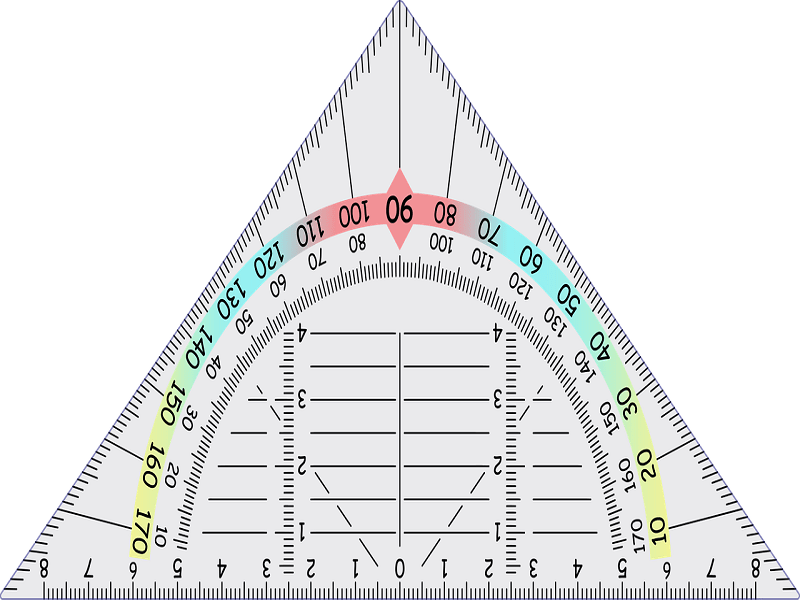Supplementary and complementary angles are a nightmare for many kids in schools. Most children also find them easy, but as all people are different, there needs to be a full explanation.
This supplementary and complementary angles article will cover all the queries kids face during their math class. This angles article will talk about the meanings and the examples of these angles to give you a deeper understanding of this maths section.
It also covers the details in these supplementary and complementary angles, such as the formulas, the usage of calculators, and much more.
Let’s jump into the article!
Complementary Angles And Supplementary Angles
When you see two angles making a sum of ninety degrees, it is the complementary angle. Remember, ninety is the key to identify a complementary angle. Another sign of a complementary angle is when you see a right angle.
When you see two angles making a sum of one-eighty degrees, it is the supplementary angle. Remember, one-eighty is the key to identify a supplementary angle. Another sign of a supplementary angle is when you see them on the same side, forming a linear angle.
The common element in these is that they both are a combination of two angles. Vertex is the meeting of two lines at a common point. So, when this intersection happens, that is when you see an angle.
Being a maths student, you would know that trigonometry ratios need these angles the most. So, the trigonometry ratios for complementary angles are as the following:
- Sin (90-A) is equal to cos A and, cos(90-A) is equal sin A
- Tan (90-A) is equal to cot A and cot (90-A) is equal to tan A
- Sec (90-A) is equal to cosec A and, cosec (90-A) is equal to sec A
The trigonometry ratios for supplementary angles are as the following:
- Sin (180-A) is equal to sin A
- Cos (180-A) is equal to minus cos A
- Tan (180-A) is equal to minus tan A
Supplementary And Complementary Angles Examples
Complementary Angles Calculator
Today it is easy to solve such maths questions as everything is available online to help you out. One of the best maths tools is the online calculator, with which you can solve your complimentary angle questions.
It is easy to use as you only have to fill in the angle in the field which says input. Then Press solve to make the calculator work. You will now see the answer. So isn’t it simple? A few of the online complementary angles calculators to consider are as the following:
- Fraction Exponent Calculator
This online calculator will give you the answer for fraction exponent expression. It prefers the exponent number in fraction form. For example, if we have a,b, we will consider them as nominator and denominator.
You can also call fraction exponents rational exponents. So, use a fraction exponent calculator to solve your question.
- Sine Calculators
The sine calculator is the best tool to find out the right triangle’s sine angle. In a few seconds, you can see the answer on this online calculator. The sine fraction is essential as you need it in the trigonometric functions. So sin is equal to the length of the opposite side, divided by the hypotenuse.
- Moment Of Inertia Calculator
The moment of inertia determines the object’s angular mass. If the mass and distance are available, this online tool will calculate the moment of inertia for you. In the space, mention mass, x, and object’s distance. Click solve to know the answer to the moment of inertia.
- Ionic Formula Calculator
If you wish to calculate a chemical compound’s ionic charge, use this online formula calculator to determine. You also do not need to memorize the formula as this online calculator shows the ionic formula.
- Rational Expression Calculator
If you want to see the rationalized form for any expression, use this online rational expression calculator. You can make your maths calculations faster through this online calculator.
You have to mention the denominator as well as the nominator expression. After pressing the calculator button, you will see the rationalized form.
- Line Of Best Fit Calculator
If you want to see the scatter plot, use this online line of the best-fit calculator. Displaying the line graph is possible within seconds through this online calculator. These calculators are essential as the information about doodle for google scholar.
- Negative Exponents Calculator
Learning the usage of this exponents calculator is as essential as learning how to clear cookies on iPhone, chrome, and iPad. If you want an exponent value, use this online calculator.
In the input space, mention base as well as exponent value. You will now see the results in the output space of the calculator.
- Standard Error Calculator
If you want to see a fraction form of a standard error, use this standard error calculator. Using this standard calculator is as relevant as kids tv shows from the 2000s.
Name A Pair Of Complementary Angles & Complementary Angles That Are Not Adjacent
The complementary angles formula is A plus B is equal to ninety, whereas the supplementary angles formula is A plus B ie equal to one-eighty. So a pair of complementary angles can be thirty and sixty as they together make a ninety.
Non-adjacent complementary angles make up ninety together but fail to have a common vertex. They also make a right angle when put together. You should solve more complementary angle examples to be perfect.
Wrapping Up: A Detailed Guide About Supplementary And Complementary Angles
You have to remember the basics, such as complementary angles add up to ninety degrees and supplementary add up to one-eighty. All the above guide is relevant to students who have issues understanding maths angles in their maths class.
The detail about the above online calculators is essential for people dealing with numbers. This complementary angles article is for all students or adults wanting to know more about angles and online calculators.
Best of luck!

